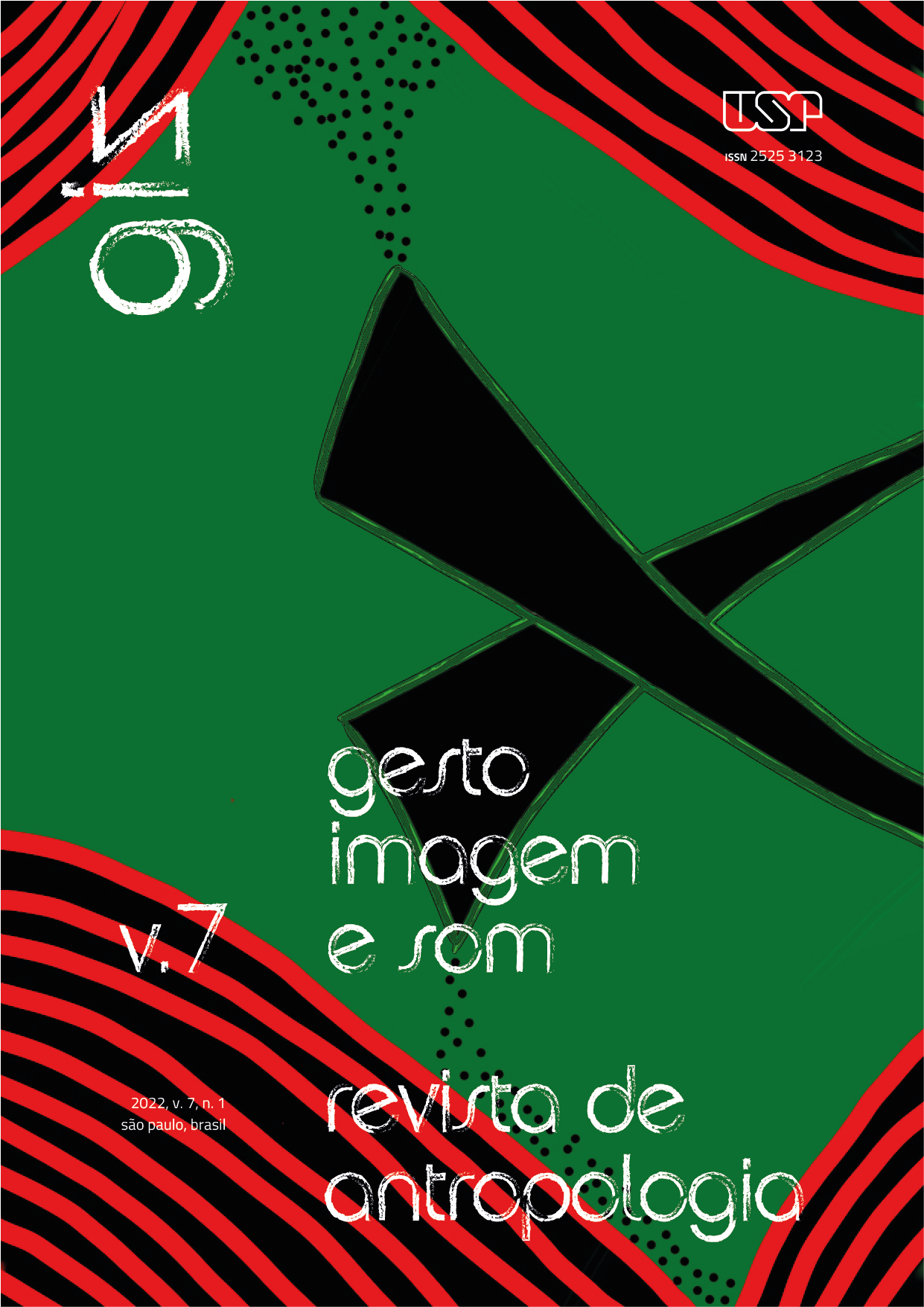The power of axé and its relationships among image, transformations and visibility
DOI:
https://doi.org/10.11606/issn.2525-3123.gis.2022.184633Keywords:
Power, Axé, Candomblé, PhotographAbstract
This article discusses representations of Candomblé produced by those who are part of it, in three Sergipe’s terreiros, of different lineages. The imagery cutout chosen is the photograph, since, even though the photographs are seen as clippings of realities and contexts, they present a series of interpretations about what they want to communicate. I try to think about the performative and political acts that these subjects perform by making visible or not the images that are produced in these three houses. Power was thought precisely by the fact that the word Axé represents Force, and therefore referred to its potentiality as a maintainer of religion. In the field, I heard a lot of phrases like "You can feel the axé in the photo"; "this saint there has a lot of axé", which despite being fixed in an image, is felt by those who recognize it in their daily lives.
Downloads
References
Benjamin, Walter. 1987. Pequena história da fotografia. In Magia e técnica, arte e política, Walter Benjamin. São Paulo: Brasiliense, 91-107.
Briggs, Charles. 1996. The Politics of Discursive Authority in Research on the “Invention of Tradition”. Cultural Anthropology, 11(4): 435-469.
Capone, Stefania. 2009. A busca da África no candomblé, tradição e poder no Brasil. Rio de Janeiro: Contra capa livraria/ Pallas.
Collins, John. 2008. A razão barroca do patrimônio baiano ["Bahian Patrimony's Baroque Reason"]. Revista de Antropologia (Brazil), 51(1): 29-73.
Dantas, Beatriz Góis. 1987. Pureza e poder no mundo dos candomblés. In Candomblé, desvendando identidades, Carlos Eugênio M. de. Moura (org). São Paulo: Emw editores, 121-127.
Dantas, Beatriz Góis. 1988. Vovó Nagô e Papai Branco: Usos e abusos da África no Brasil. Rio de Janeiro: Graal.
Deleuze, G. e Guattari, F. 1992. O que é um conceito? In O que é a filosofia. Tradução de Bento Prado Jr. e Alberto Alonso Muñoz. Rio de Janeiro: Ed. 34, 7-47.
Didi-Huberman, G. 2012. “Quando as imagens tocam o real”. Revista do Programa do Pós-Graduação em Artes da escola de Belas Artes da UFMG, vol. 2(4), 204-219.
Douglas, Mary. 1976. Pureza e Perigo – Ensaio sobre as noções de poluição e tabu. Lisboa: Edições 70.
Dubois, Phillippe. 2010. O ato fotográfico e outros ensaios. Campinas: Papirus.
Eliade, Mircea. 1996. O Sagrado e o Profano. São Paulo: Martins Fontes.
Goldman, Marcio. 2009. Histórias, devires e fetiches das religiões afro-brasileiras: ensaio de simetrização antropológica. Anál. Social, Lisboa, n. 190, 105-137.
Gombrich, E. H. 1995. A história da arte. Rio de Janeiro: LTC Livros Técnicos e Científicos.
Gonçalves, Marco Antônio e Scott Head. 2009. Confabulações da alteridade: imagens dos outros (e) de si mesmos. In Devires Imagéticos: a etnografia, o outro e suas imagens, Marco Antônio Gonçalves e Scott Head (org). Rio de Janeiro: 7Letras.
Mitchell, W. J. T. 1996. What do pictures “really” want? October, vol. 77, 71-82.
Rabelo, Miriam. 2008. A possessão como prática: esboço de uma reflexão fenomenológica. Mana, Rio de Janeiro, v. 14, n. 1, 87-117, Apr.
Sahlins, M. 2001. Como pensam os nativos: sobre o capitão Cook. cap. 4, 169-212. São Paulo: Edusp.
Samain, Etienne e Fabiana Bruno. 2016. Como pensar e fazer pensar um arquivo fotográfico: uma dupla experiência. Revista Visagem, v. 2, 93, A 116-300.
Schieffelin, E. 1985. Performance and the Cultural Construction of Reality. American Ethnologist. The Journal of the American Ethnological Society, American Anthropological Association 12(4): 707-24.
Schieffelin, E. 1998. Problematizing performance. In Ritual, performance, Media, F. Hughes-Freeland. ASA Monographs #35. NY: Routledge.
Strathern, M. 1995. Stealing, stealing, and borrowing simultaneously. Disponível em: Sharing, stealing and borrowing simultaneously* (nomadit.co.uk) (acessado em 10/02/2020).
Turner, Victor. 2008. La selva de los símbolos: Aspectos del ritual Ndembu. Madrid: Siglo.
Downloads
Published
Issue
Section
License
Copyright (c) 2022 Díjna Andrade Torres

This work is licensed under a Creative Commons Attribution-NonCommercial-NoDerivatives 4.0 International License.
Authors who publish in this journal agree to the following terms:
a. All rights reserved for authors. Journal has right to first publication. Work is simultaneously licensed under Creative Commons Attribution License which permits sharing work with recognition of authorship and initial publication in this journal for non-commercial ends.
b. Authors are authorized to separately make additional contracts for non-exclusive distribution of version of work published in this journal (e. g. publish in institutional repository or as book chapter), with recognition of authorship and initial publication in this journal.







